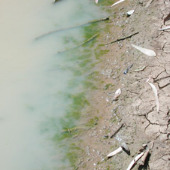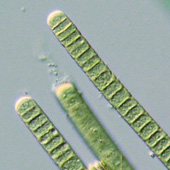|
|
Light availability and productivityLight is important in wetlands because it is necessary for plants (algae and macrophytes) to undertake photosynthesis. During photosynthesis, inorganic carbon (CO2) is transformed into carbohydrates. Information on this topic is available at the following web page:
Shading controls primary productivity within the wetland by reducing light availability. The degree of shade created by vegetation is influenced by several factors, including canopy height, foliage density, wetland width and orientation, topography, latitude and season. The effect of shading on the structure and function of wetland ecosystems is greatest in small wetlands[1]. References
Last updated: 22 March 2013 This page should be cited as: Department of Environment, Science and Innovation, Queensland (2013) Light availability and productivity, WetlandInfo website, accessed 18 March 2024. Available at: https://wetlandinfo.des.qld.gov.au/wetlands/ecology/processes-systems/productivity/ |

 — Department of Environment, Science and Innovation
— Department of Environment, Science and Innovation



